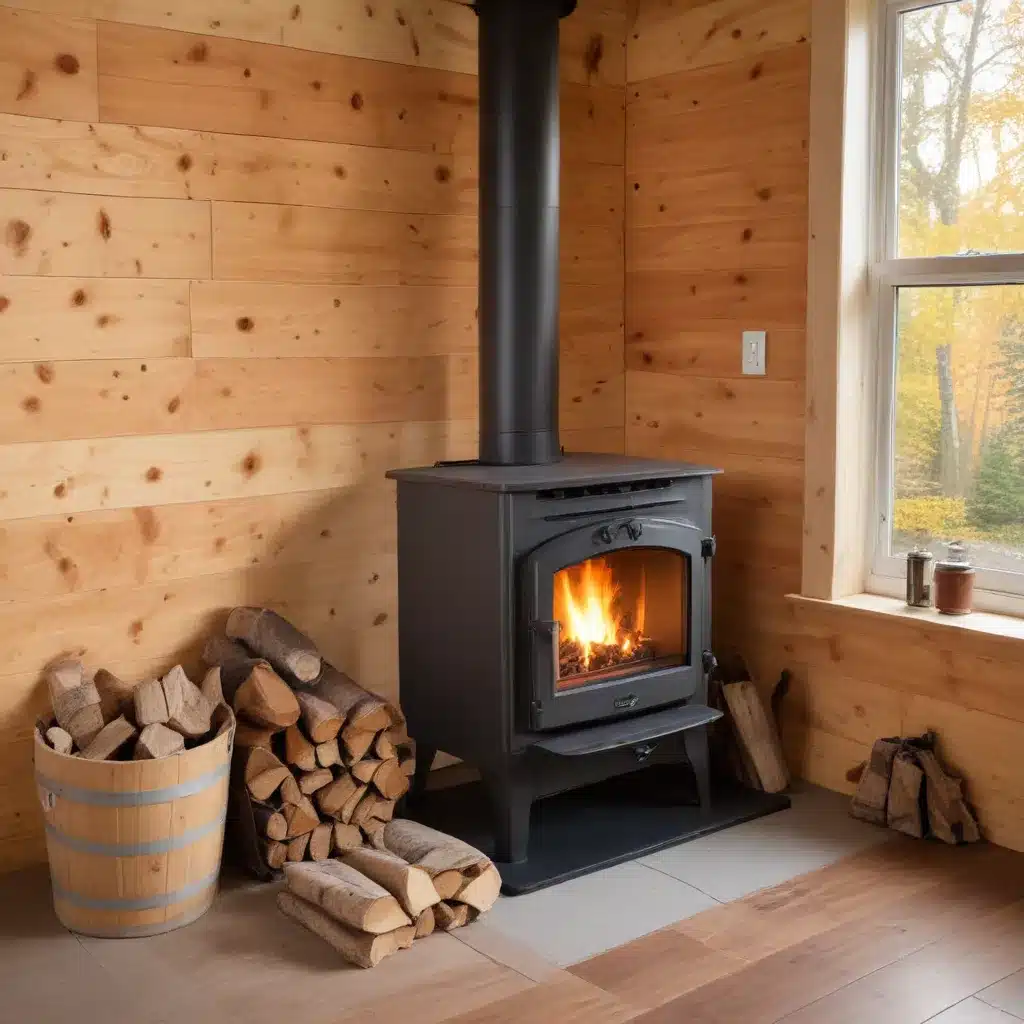
Extending the Heating Season: Wood Stove Thermal Mass Storage
The Power of Thermal Mass in Wood Stove Heating
As a seasoned expert in wood stove heating solutions, I’m often asked about ways to optimize the efficiency and performance of these versatile home heating systems. One aspect that is frequently overlooked, but can have a significant impact, is the role of thermal mass. In this comprehensive guide, we’ll explore the benefits of incorporating thermal mass into your wood stove setup, offering practical tips and insights to extend your heating season.
Understanding Thermal Mass
At its core, thermal mass refers to the ability of a material to absorb, store, and release heat energy. When it comes to wood stove heating, the strategic use of thermal mass can help regulate temperature fluctuations, maintain a more consistent indoor climate, and even reduce your overall energy consumption.
The key principle behind thermal mass is its heat capacity – the amount of heat a material can store per unit of mass. Materials with high heat capacity, such as masonry, stone, or water, are excellent at absorbing and storing heat. As the wood stove burns, these high-mass materials gradually absorb the heat, preventing the room from becoming uncomfortably hot. Then, as the fire dies down, the stored heat is slowly released, extending the warmth throughout the space.
Enhancing Wood Stove Performance with Thermal Mass
There are several ways you can incorporate thermal mass into your wood stove setup to maximize its benefits:
1. Masonry or Soapstone Surrounds
One of the most common ways to add thermal mass to a wood stove is by constructing a masonry or soapstone surround. These dense, heat-absorbing materials can be built into the walls or placed directly on top of the stove, providing a large thermal reservoir that helps regulate temperature swings.
Soapstone, in particular, is a popular choice due to its exceptional heat-holding capacity. As the wood stove burns, the soapstone slowly absorbs the heat, then releases it gradually over time, extending the warmth in the room long after the fire has died down.
2. Water-Filled Thermal Mass
Another effective way to harness the power of thermal mass is by using water-filled containers, such as 55-gallon drums or custom-built tanks. As the water heats up, it absorbs and stores a significant amount of energy, which can then be released as needed to maintain a comfortable indoor temperature.
These water-based thermal mass systems can be integrated directly into the wood stove setup or placed in strategic locations throughout the space. Some homeowners even use them to preheat domestic hot water, further improving the overall efficiency of their heating system.
3. Brick or Stone Stove Toppers
If you don’t have the option to build a full masonry or soapstone surround, you can still take advantage of thermal mass by placing a thick slab of brick or stone directly on top of your wood stove. This simple addition can help slow down the heat transfer into the room, allowing the stove to maintain a steadier output for longer periods.
When selecting materials for your stove topper, consider options like limestone, slate, or even repurposed concrete pavers. The key is to choose a material with a high heat capacity, ensuring it can effectively store and release heat as needed.
Optimizing Thermal Mass for Your Climate and Needs
The effectiveness of thermal mass in wood stove heating can vary depending on your local climate and the specific needs of your home. In regions with significant daily temperature swings, thermal mass can be particularly beneficial, as it helps to smooth out these fluctuations and maintain a more consistent indoor environment.
For example, in areas with hot days and cool nights, thermal mass can absorb the excess daytime heat and release it during the cooler evening hours, reducing the need for active cooling or heating. Conversely, in colder climates, thermal mass can help extend the wood stove’s heating capacity by slowly releasing stored heat long after the fire has died down.
It’s important to carefully consider the size and placement of your thermal mass components to ensure they align with your heating requirements and the characteristics of your home. Consulting with a experienced wood stove or HVAC professional can help you determine the optimal configuration for your specific situation.
Maintenance and Safety Considerations
As with any wood stove system, it’s essential to prioritize safety and proper maintenance when incorporating thermal mass. Regular cleaning and inspection of the stove, flue, and surrounding components are critical to prevent potential hazards, such as creosote buildup or structural issues.
Additionally, be mindful of the weight and structural integrity when adding heavy thermal mass materials to your wood stove setup. Ensure that the stove and its supporting surfaces can safely accommodate the additional load without compromising stability or safety.
Extending Your Heating Season with Thermal Mass
By strategically integrating thermal mass into your wood stove heating system, you can unlock a host of benefits that can help extend your heating season and improve overall energy efficiency. Whether you choose to incorporate masonry, soapstone, or water-based thermal mass, the key is to find the right balance and configuration that aligns with your home’s unique needs and your local climate.
As you explore the possibilities of thermal mass in wood stove heating, remember to consult with experienced professionals, prioritize safety, and be prepared to fine-tune your system over time to achieve the best possible results. With the right approach, you can harness the power of thermal mass to stay cozy and comfortable throughout the colder months.
For more information on wood stove heating solutions, maintenance, and energy-efficient strategies, be sure to visit https://woodstoveheaters.com/. Our team of experts is dedicated to providing the resources and guidance you need to make the most of your wood stove investment.


